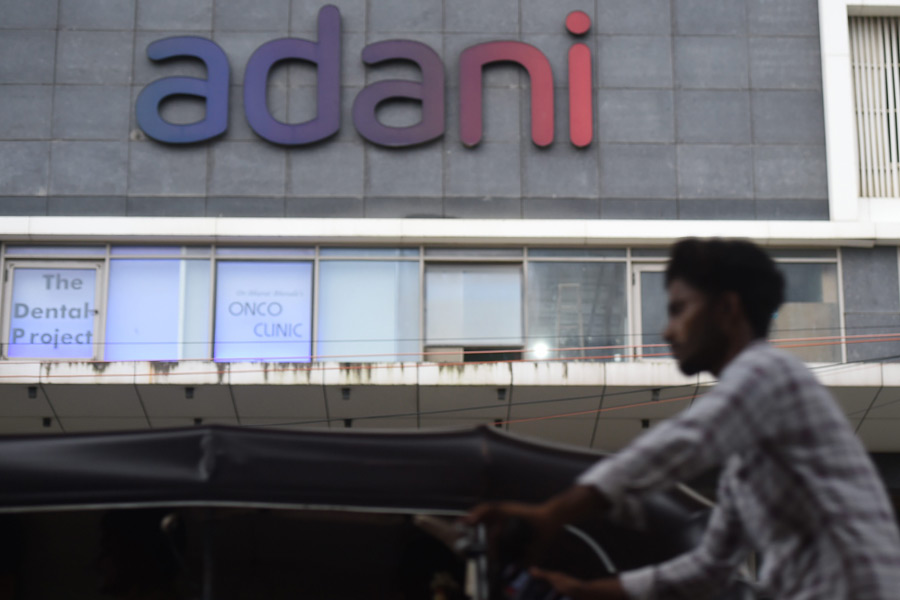 |
New Delhi, Jan. 27: The naval headquarters here has ordered all ships and aircraft deployed for tsunami relief in the Indian Ocean region back to their home ports by January 31, not only because they have completed the immediate tasks on hand but also because ?it is better to quit when you are still welcome?.
?I think we have sent the signal that we can look after the region,? a senior officer said to illustrate the navy?s strategic interest in tsunami relief.
Indian naval ships were deployed for three overseas operations ? named Gambhir (Indonesia), Rainbow (Sri Lanka) and Castor (the Maldives) ? after the December 26 tsunami wreaked havoc in countries in the Indian Ocean region, in which the Indian Navy sees itself as a dominant power. The navy set sail for international assignments within 24 hours of the tsunami.
Of the three international operations, it is the one in Sri Lanka that the naval headquarters and the defence ministry have carried out delicately with some trepidation. The bitter experience of Operation Pawan, the Indian peacekeeping force in 1987-89, in the island nation has still not been lived down.
But this time, the Indian forces came in for the unexpected from both the Lankan government and the LTTE even as the Tamil militants alleged that there was large-scale discrimination in the distribution of relief.
Sri Lanka?s foreign minister Lakshman Kadirgamar wrote in the visitor?s book of one of the ships that Colombo was ?very appreciative of help?, and that Delhi had rendered assistance while taking care of its own spoke of the Indian Navy?s strategic capability.
In a separate note of appreciation, the chief of Sea Tigers, the LTTE?s naval wing, said on the outfit?s website that the Sri Lankan forces ought to learn from the Indians and reach out with relief and assistance after a natural disaster without discrimination.
Part of the reason for de-inducting the Indian Navy from Sri Lanka is also technical. With the immediate task of relief now under control, the Indian Navy concluded that it was neither equipped nor keen on undertaking responsibilities of rehabilitation that will involve deployment of vessels with heavy lift capacity.
Operation Rainbow involved the deployment of the INS Jamuna, INS Sutlej and the INS Sarvekshak ? all survey ships ? the INS Ghorpad (landing ship tank) and the INS Kirch (missile corvette). The vessels were involved in clearing the Colombo harbour and Galle port and ventured into Trincomalee and Kankesanthurai in the north.
Naval medical teams opened camps. Though the Indian Navy was acting to assist the Lankan government, naval officers, doctors and artisans interacted with LTTE volunteers in the east and the north.
The overseas deployment by the navy was unprecedented in terms of presence in the western and eastern seaboards. A naval vessel has an average of 200 crew. Most of the ships carried their own helicopters. Apart from that, two aircraft ? a Dornier and an Islander ? were based in Sri Lanka.
Deployment in Maldives included the INS Mysore (destroyer), INS Udaygiri (frigate) INS Aditya (replenishment vessel) and the INS Taragiri. All but the Taragiri have begun returning to their bases in the western command.
The deployment for Indonesia (Operation Gambhir) included the INS Khukri (missile corvette) and the INS Nirupak (survey vessel) that was converted into a hospital ship. The naval operations directorate used the assets of the western, eastern and southern commands for the deployments and deputy chief of naval staff Vice-Admiral Sureesh Mehta was put in charge of coordination.
The overseas deployments were in addition to the commitments in the Andaman and Nicobar (Operation Seawaves) and the east coast (Operation Madat). Operation Madat was called off within a week from December 26 because the east coast was serviced from land. At its peak, the naval deployment for tsunami relief involved 32 ships, 20 helicopters and eight fixed-wing aircraft apart from 5,500 personnel ? nearly a fourth of its assets and certainly half of its operational resources.
This is clearly a peace dividend. If the country was perceiving a threat or if the conflict over Kashmir was leading to tensions, this would have been impossible, navy commanders readily admit.
It is time now at the naval headquarters to calculate the costs of the deployment ? accountants are still to identify the nature of the expenses. On an average, it costs the exchequer about Rs 1.5 lakh for an hour-long sortie by a Chetak helicopter and Rs 30-40 lakh to keep a ship sailing at sea for one day.










